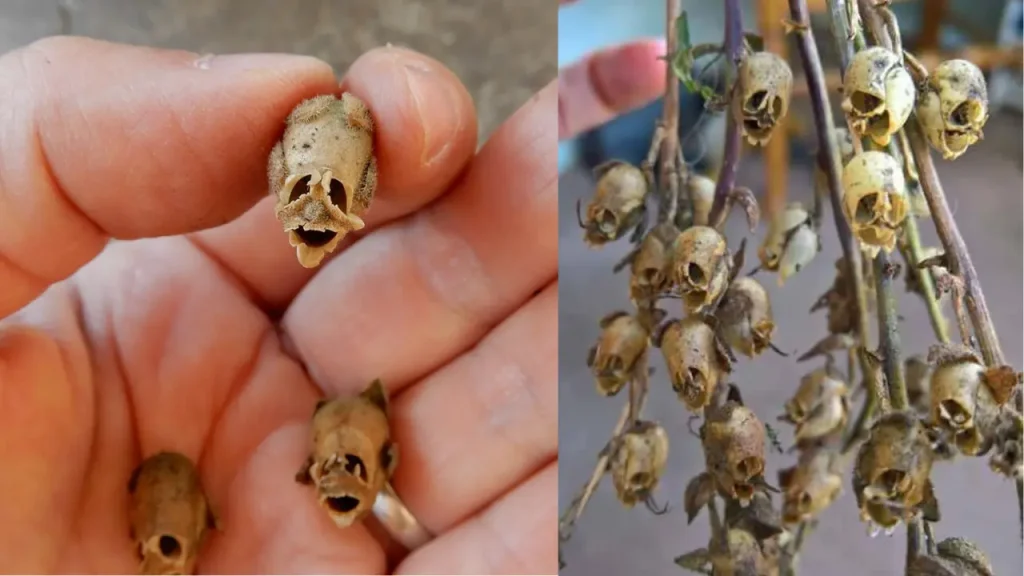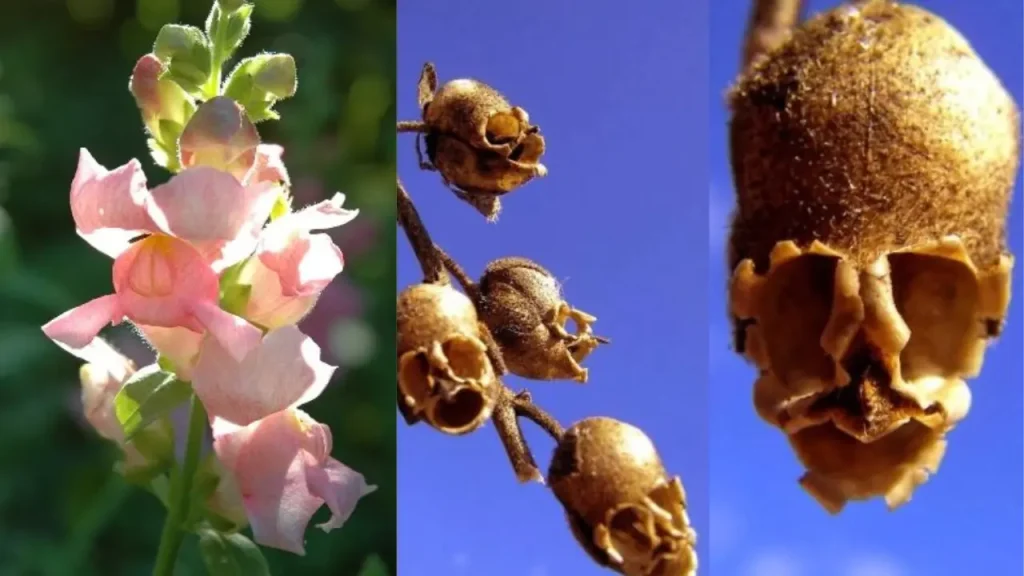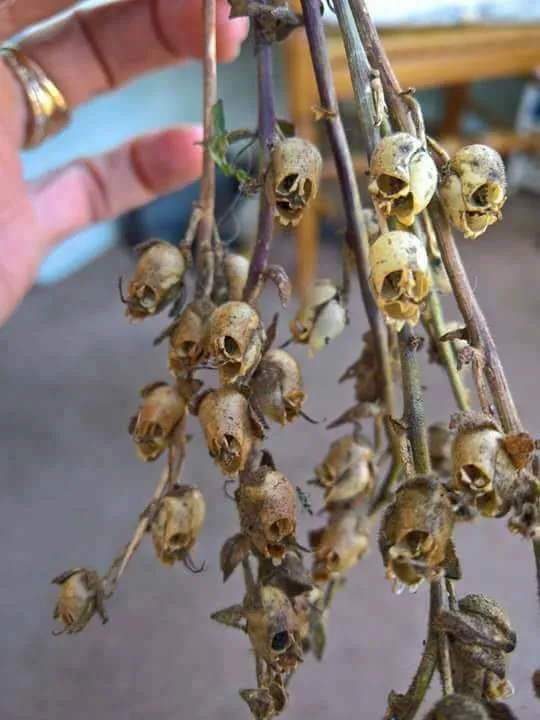
Suppose you are in a garden and the flowers begin to change their forms once they are fully bloomed. This is not a scene that can be inspired by a fairy tale but real life with the flowers of snapdragon. With bright colored flowers and dragon-like appearance of the flowers, snapdragons are one of the favored attractions for gardeners as well as the visitors in the flowering period. However, it is their post-bloom stage that attracts another kind of attention. These flowers are fascinating because as they die, their seed heads resemble tiny skulls, hence the name.
In this article, we delve into the unique post-bloom appearance of snapdragon flowers. So, join us to explore how dead snapdragon flowers appear like skulls continues here and we would like you to share it with us.
1. Life and death of Snapdragon flowers
Snapdragon flowers. scientifically called Antirrhinum majus, are among the most attractive flowers whose beauty is visible from the time of blooming to the time they wither. These commonly grown garden plants start their life cycle germinating from tiny seeds. After only a couple of weeks, they grow into bright shiny flowers with their vivid colors symbolizing an open mouth of a dragon. Gardeners and nature lovers consider such periods as the most wonderful, if only because the beauty of the garden is enriched with the presence of snapdragons.
As the blooming season wanes, the life cycle of snapdragons undergoes a dramatic change. When pollination has occurred, the attention goes to the formation of the seed pod part of the plant. These pods develop at the base of these withered flowers, and are small, initially, and green in colour. The pods of the plant grow as they mature and change their color to brown due to the withering process. This is the stage when the pods start to shrink turning to hardwoods, and with this process, the pod shapes resemble skulls. This change is cyclic and of a specific life cycle of the plant so that the seeds remain covered to be released at the right time.

Image Credit: Unknown
2. A Closer Look at the Skull-Like Appearance
2. 1 Physical Characteristics
It is important to mention that dead snapdragons have particularly flat seed pods that are open at the top and are round thereby having a narrowed base. This structure gives a blink effect and makes the structure resemble the shape of a skull. Based on the given structures, the pod is similar to the face of the skull, and the open part is relevant to the release of seeds. This hole is usually oval in shape and may resemble eye orbits. Here, the lines of drying of the pod can also appear like a skull’s nose and mouth. These pods change their color from a bright green to a coffee like brown which adds to the skeletal nature of these pods. The stems of these pods yield to be very dry and when broken give out a very brittle feel to the touch just like giving out to the palms as opposed to the flower part which is relatively very soft, lush, and full-fledged.

Image Credit: Unknown
2. 2 Expert Insight
According to the botanists, this shift is not within the beauty of shedding the outer skin but an opportune transition, one whose evolution hurts. The pods resemble skulls, and this could probably be a way in which nature has provided protection against animals that can easily break open fruits that are ripe. This is because smaller animals might be discouraged by the appearance of the nut thereby preventing them from eating the seeds within. Here, this biological reproduction is prevalent as it increases the chances of seed germination to proceed with the plant’s life cycle.
By taking a closer look at these unusual formations, hope you all have got that what might initially appear as merely a spooky oddity is a sophisticated survival strategy deeply embedded in the life of snapdragons.

Image Credit: Unknown
3. Culture and History
The metamorphosis of the flowers depicting a snapdragon actually symbolizes the skull connects to a system of myths and cultural connotations of the skull. These associations, if connected to the simple garden snapdragon, may also increase their interest by adding more than one meaning to them.
3. 1. Myths and Folklore
It is important to mention that in some cultures, people have a belief that snapdragons are related to deceit and in other cultures to elegance. European folk also deem them to ward off untruths and improvements, wickedness, and adversity. This time snapdragons ‘protect’ themselves in skulls while skulls are associated with protection. Here, they convey clear references to skulls’ representations as guardians of the difference between the living and the afterlife.

Image Credit: Unknown
3. 2 Symbolism of Skulls
Simply, skulls carry significant weight in numerous cultures. Skulls in many cultures are related to death and at the same time are related with the aspect of new creation and transformation. Here, this duality mirrors the life cycle of the snapdragon, blooming vibrantly and then morphing into a symbol that reflects both an end and a prospective future through seed dispersal.
The combination of the bright snapdragon flowers and the generally dark skull motif makes the viewer pay more attention to the renewal of life and existence and existence in general. This may in some cases attract not only the common gardeners and naturalist to take a gander at the flowers and snapdragons. It also captivates their minds to think about the deeper meaning behind snapdragons being used in gardens today.

Image Credit: Unknown
4. Artistic and Photographic Interest
4. 1 Inspiration for Artists and Photographers
This is where the snapdragon flower gives detailed description, especially in visual arts. It is simply by depicting the gloriously colored floral florets against the frightening seed head which is shaped like a skull. So, photographers can capture this transformation in a series of images that tell a story of growth, decay, and the cycle of life.
4. 2 Incorporating Snapdragon Skulls in Art
Artists can use the imagery of snapdragon skulls in various ways as follows.
Illustration and Painting – Simply, drawing or painting these unique shapes can allow for exploration of themes like mortality and renewal. Such artworks might contain the elements of the impossible or be combined with other semiotic images.
Mixed Media and Sculpture – These seed pod surfaces can be modeled to replicate or replicated in a number of materials creating rather stimulating sculptures that highlight their natural form.
Photographic Series – Creating a photographic series based on the lifecycle of a snapdragon from its bloom to the skull-like seed pod can become a strong story. This series could focus on the aesthetics of rotting and the natural phenomena many people do not pay attention to. Here, these artistic interpretations do not only reveal the attractiveness of the snapdragon skulls’ looks. They also ask the viewers to look deeper and appreciate the world of arts for the things that most of the population may consider ugly and repulsive.

Image Credit: Unknown
You may be interested in reading this article: Abandoned Baby Fox Forms A Special Bond With Two Orphaned Badger Cubs At The Animal Shelter. We also invite you to explore more of our captivating content on our channel. Double muak!

Pingback: A fully preserved 39,500-year-old cave bear found in the Siberian permafrost -